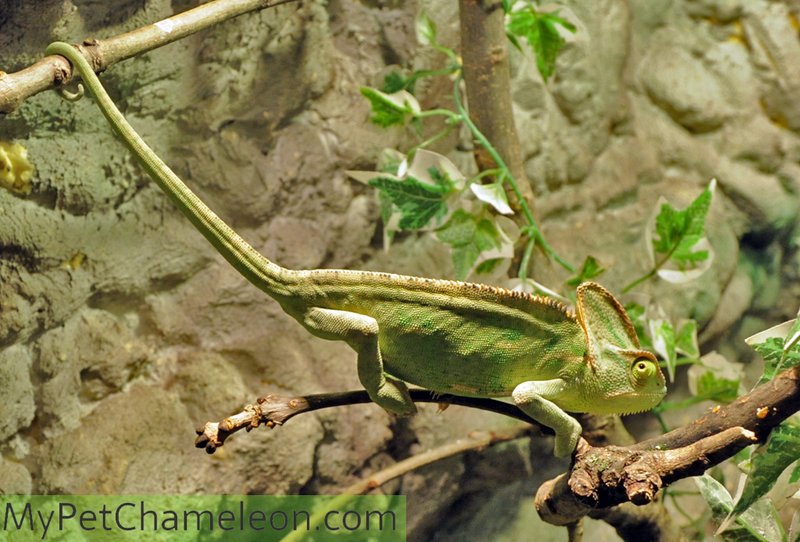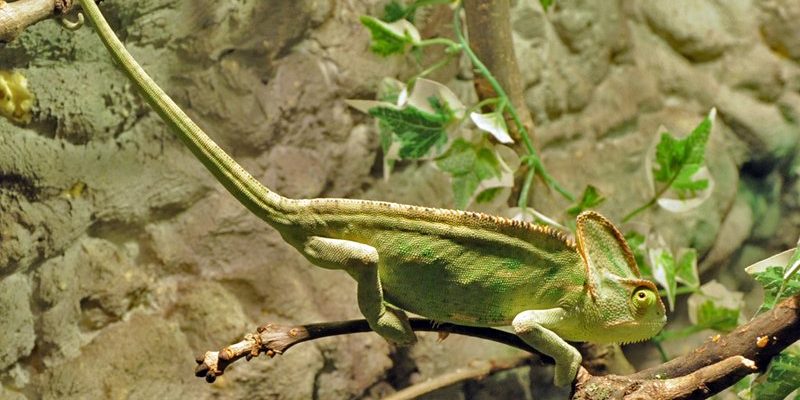
The veiled chameleon, known scientifically as *Chamaeleo calyptratus*, is native to the Arabian Peninsula. They’re popular pets because of their unique appearance and personality. However, if you’re considering breeding them, it’s essential to know their reproductive habits and what you need to create a healthy environment for them.
Understanding Veiled Chameleon Mating Rituals
When it comes to mating, veiled chameleons have some pretty interesting rituals. During the breeding season, which typically occurs in spring and summer, males become more vibrant as they strut their stuff. They showcase their colors to attract females and will often engage in a bit of a dance—head bobbing, arm waving, and turning their bodies to show off their brilliant hues.
You might wonder, why do they do this? It’s all about making an impression. The male must convince the female that he’s the best potential mate. If she’s impressed, she might respond with a series of head bobs—an invitation of sorts. If she’s not interested, she may turn away or even hiss. Consequently, not every romantic encounter ends happily, which adds to the drama of their mating season.
If the female is receptive, they will mate. This can last anywhere from a few minutes to over an hour. After mating, the female’s body goes through significant changes in preparation for egg-laying. Here’s where things get a little more complicated.
Female Veiled Chameleons and Egg-Laying
After successful mating, female veiled chameleons will lay their eggs around 30 days later. This process is known as oviposition. Females can lay anywhere from 20 to 80 eggs in a single clutch! Isn’t that a big family? The size of the clutch can depend on factors like the female’s age and health.
Finding a suitable place to lay her eggs is crucial. Female chameleons are known to dig holes in the substrate of their enclosure. If you’re providing a habitat for breeding, ensure there’s a digging box filled with moist sand or potting soil. This gives her the perfect spot to lay her eggs.
Here’s the thing: If a female doesn’t find a safe place to lay her eggs or feels stressed, she might develop a condition called egg-binding. This can be life-threatening, so it’s essential to monitor her closely during this time.
Incubation: The Waiting Game
After laying her eggs, the next critical step is incubation. If you’ve ever waited for something exciting to happen, you can relate to the patience required during this period. Typically, veiled chameleon eggs take about 6 to 9 months to hatch, depending on temperature and humidity conditions.
The eggs should be kept in a warm and humid environment. Many breeders use an incubator to control these conditions. A temperature range of 75 to 82 degrees Fahrenheit is ideal, and the humidity should be around 80%. Keeping a close eye on the eggs is essential; they should be checked regularly for any signs of mold or drying out.
You might be wondering how to identify a healthy egg. A healthy egg should be firm and slightly opaque. If they start to look shriveled or discolored, it could be a warning sign.
Care for Baby Chameleons: The First Steps
Once the baby chameleons, or hatchlings, break free from their eggs, they’re on their own. Unlike some reptiles that provide care, veiled chameleons do not look after their young. This means that potential breeders must be ready to take on the responsibility of raising these tiny creatures.
Right after hatching, they’re about 3 to 4 inches long and fully independent. They’ll need a carefully maintained environment to thrive. Setting up a separate enclosure with proper heating, humidity, and access to food is vital. Young chameleons typically eat small insects like fruit flies, pinhead crickets, and aphids.
You’ll want to keep them in a space where they can climb and explore. A screen cage provides good ventilation and gives them the opportunity to feel more secure while climbing around. Honestly, watching them explore can be quite rewarding and entertaining!
Challenges in Breeding Veiled Chameleons
Breeding veiled chameleons isn’t without its challenges. As mentioned earlier, stress can lead to egg-binding, which is a common concern among female chameleons. Another issue is ensuring genetic diversity if you’re breeding multiple pairs. Inbreeding can lead to health problems in the offspring, so maintaining healthy pairings is essential.
Environmental factors can also play a significant role in successful breeding. If the conditions—like temperature, humidity, and lighting—aren’t right, it can hinder mating and egg-laying. Breeders should also be on the lookout for health issues in both males and females to prevent any potential complications.
If you’re thinking about breeding these chameleons, do your research and prepare thoroughly. A solid understanding of their biology and needs will go a long way in making the process smoother.
Final Thoughts on Breeding Veiled Chameleons
In conclusion, breeding veiled chameleons can be a rewarding yet intricate process. From their courtship rituals to the careful incubation of eggs, each stage is a piece of a larger puzzle. If you’re ready to embark on this journey, ensure you have the right knowledge and resources at your fingertips.
Remember, patience is key. Hatching and raising chameleons takes time and effort, but the joy of watching these colorful creatures grow makes it all worth it. Keep learning, stay informed, and enjoy the vibrant world of veiled chameleons!

